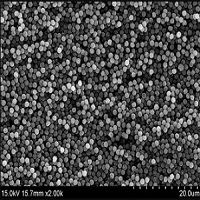Superior Functions Of The Carboxyl-Functionalized Magnetic Silica Nanoparticles
The promising properties of nanomaterials have received a lot of attention for a variety of applications, including optoelectronic sensing, agricultural fields, the food industry, drug delivery, therapeutic/health, and catalytic technologies. Nanosized silica particles and carboxyl-functionalized magnetic silica nanoparticles have recently gained a lot of attention. Nanooxides, on the other hand, have important uses in electronics, medicine, cosmetics, food, filler applications, consumer goods, and other fields.

Carboxyl-functionalized Magnetic Silica Nanoparticles
Adsorbents in environmental techniques, additives to cement in structural materials, low-cost reinforced filler, and filter materials are just a few examples of the many applications for these raw materials. As of late, because of the special properties of silica and its mixtures, many works exhibiting the different uses of silica and silica-based materials in various vital fields have been distributed.
Usage in many modern applications
Due to their numerous applications in a variety of fields, nanomaterial technologies have received a lot of attention over the past few decades. Nanotechnologies are becoming increasingly important in all fields of science, engineering, and medicine as a result of developments in the distinctive properties of nanoscale particles.
Due to their greater advantages over conventional nanoparticles, iron oxide beads coated with silica and silica nanoparticles are also regarded as important nanomaterials with significant applications, whose use has increased significantly over the past few years.Mesoporous materials, like MSNs, have received a lot of attention from researchers in recent decades, and it has been regarded as one of the most Outstanding materials for usage in cutting-edge nanocatalysts, nanosorbents, nanomedicine, and other nanocompounds.
Silica nanoparticles (SiO2 NPs) can be made using a variety of methods, including hydrothermal processes13, chemical vapor deposition, microemulsion synthesis, combustion processing, sol–gel synthesis, and plasma manufacturing. These fabricated silica nanoparticles can be divided into mesoporous and nanoporous nanoparticles. One of the most important and widely used methods for preparing nanoparticles is the sol–gel method.



